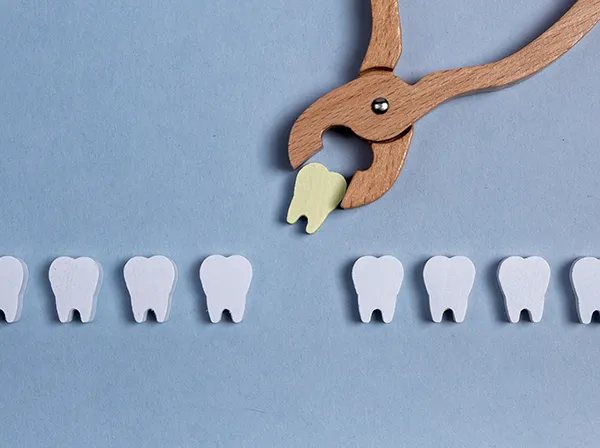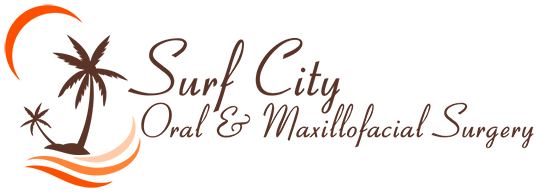 Although the prospect of undergoing a tooth extraction may seem unpleasant, it's important to recognize that this procedure is a routine practice performed by dental professionals worldwide.
Although the prospect of undergoing a tooth extraction may seem unpleasant, it's important to recognize that this procedure is a routine practice performed by dental professionals worldwide. Whether it involves removing wisdom teeth or extracting damaged or decayed teeth, tooth extraction is often necessary to alleviate pain, prevent further dental issues, and maintain overall oral health.
Reasons for Tooth Extraction
There are various reasons for tooth extraction:
To Alleviate Pain or Infection
It may be necessary to halt further infection or pain when a tooth is extensively damaged or decayed beyond repair.
If a tooth develops an abscess (a pocket of pus) or becomes infected, extraction may be required to prevent the spread of infection to nearby teeth or gums.
Prior to Orthodontic Treatment
In some cases, teeth may be extracted as part of orthodontic treatment, such as braces or dental bridges, to properly align the remaining teeth.
Tooth Extraction and Dental Implants
Dental implants are often used to support crowns and bridges when replacing missing teeth.
Types of Tooth Extraction Procedures
Simple Extraction
This can be done when the tooth is visible and does not need to be sectioned (cut) to be removed. local anesthesia is often used to numb the surrounding tissues before removing the tooth using forceps. Your blood starts clotting the instant we remove the tooth in simple extraction, so sutures are not needed. We will put gauze over the wound.

Surgical Extraction
If the tooth needs to be sectioned, or it is impacted under the gum or other teeth, then we need to use surgical extraction. You will receive local anesthesia for this as well.
In some cases, general anesthesia can be provided if necessary. Surgical extraction requires us to cut through your gum and, possibly, bone tissue. The same tools that are used for cutting into the gum and bone are also used to section the tooth. Your blood will start to clot after this procedure, but it is not as efficient as it is with a simple extraction. So, we will stitch the wound and apply gauze as well. You will get instructions on changing the gauze while you heal.
Aftercare for Tooth Extraction
Following a tooth extraction, the use of gauze is essential to control bleeding and promote clot formation in the socket. After the initial 30 to 45 minutes, gently remove the gauze from your mouth and inspect the extraction site. If bleeding has significantly decreased or stopped entirely, additional gauze may not be necessary.
However, if bleeding persists, apply a fresh piece of gauze over the extraction site, exerting firm pressure as before. Gradually reduce the frequency of changing the gauze as you monitor the bleeding. If bleeding persists beyond the initial few hours post-extraction, contact your oral surgeon for further guidance. Once bleeding has ceased or significantly diminished, alternative methods such as rinsing your mouth with salt water, using an ice pack to reduce swelling, and taking prescribed pain medication as directed can be employed to manage any remaining bleeding or discomfort.
Managing Pain After Tooth Extraction
| • | First 24 Hours: Discomfort immediately following the extraction is common as the local anesthetic wears off. Over-the-counter pain relievers like ibuprofen (Advil, Motrin) or acetaminophen (Tylenol) are typically effective in managing this initial pain. The dentist may prescribe stronger pain medications if necessary. |
| • | 24-48 Hours: Pain often peaks during this period, especially with complex extractions or significant trauma to surrounding tissues. Swelling and inflammation may also increase, contributing to discomfort. Continue taking pain medication as directed and follow any additional post-operative care instructions, such as applying ice packs to reduce swelling and avoiding strenuous activities. |
| • | 48-72 Hours: As the initial inflammatory response subsides, you may experience a gradual reduction in pain and swelling. However, some discomfort may persist, particularly during activities involving jaw movement, eating, or speaking. |
Diet
Following a tooth extraction, adhering to a proper diet is crucial to ensure optimal healing and minimize discomfort. Here are some dietary recommendations.
In the first 24 hours, you should consume a liquid diet. This could include broth, smoothies, or protein shakes. You can consume cold foods such as ice cream and popsicles, or soft foods like yogurt, applesauce, and mashed potatoes as they feel comfortable for you. Increase up to oatmeal, scrambled eggs, and cottage cheese as you are able.
Around the third day post-extraction, you can gradually reintroduce solid foods into your diet, exercising caution. Steamed or boiled vegetables, pasta, and fish are good examples of foods appropriate during this time.
Recovery Tips for Tooth Extraction
It is very important to refrain from using a straw post-extraction, as the suction can dislodge the blood clot, leading to a painful condition known as a dry socket.
Avoid crunchy or hard foods while your gums and mouth are still healing. If possible, chew on the side opposite the extraction site to minimize pressure on the area.

Healing Time After Tooth Extraction
The healing process following a tooth extraction can vary depending on factors such as the complexity of the extraction and the patient's overall health.
Typically, the initial healing phase takes about one to two weeks, during which the gum tissue closes and begins to heal over the extraction site. Complete healing, including bone remodeling and gum tissue regeneration, may take several months. By the fourth day post-extraction, the initial healing phase is usually well underway, with the gum tissue beginning to close over the extraction site and any residual discomfort diminishing.
If persistent or worsening pain, swelling, or other unusual symptoms occur, contact us for further evaluation. Maintain good oral hygiene by gently brushing your teeth and avoiding the extraction site. After a few months, the extraction site should be fully healed, with new bone and gum tissue in place. Any ongoing issues such as pain, swelling, or discomfort, or signs of infection such as pus or a foul odor, should prompt evaluation and treatment by our oral surgeon.
Schedule an Appointment
Contact Surf City Oral and Maxillofacial Surgery at 657-384-2787 today to schedule a consultation!
